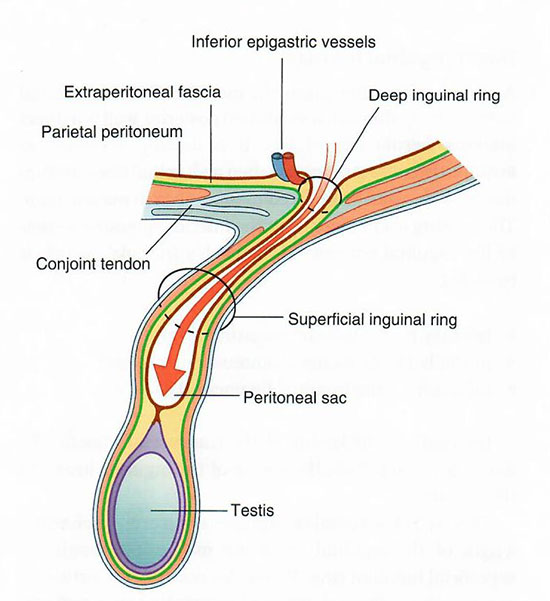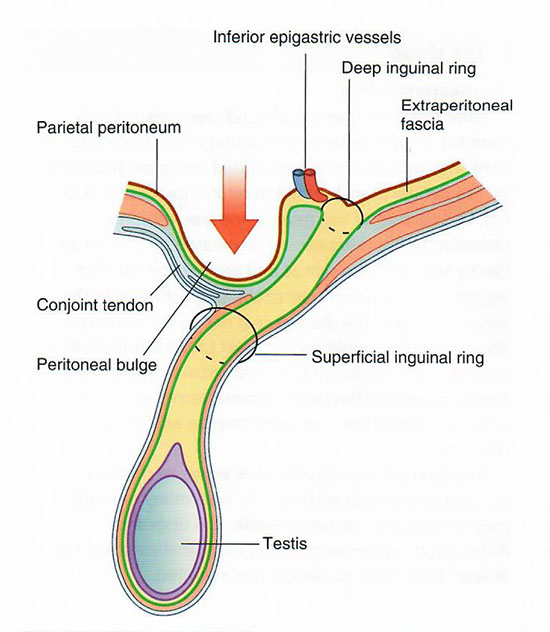
Male Pelvis and Genitalia: Page 6 of 8
An indirect (or congenital) inguinal hernia occurs when abdominal contents protrude through the deep inguinal ring, which is lateral to the inferior epigastric vessels. It typically passes through the inguinal canal and may extend into the scrotum. Indirect hernias are typically congenital due to a patent processes vaginalis.
A direct (or acquired) inguinal hernia, occurs when abdominal contents push through a weakness in the posterior wall of the inguinal (Hesselbach's) triangle, medial to the inferior epigastric vessels. It rarely extends into the scrotum. These are typically acquired due to abdominal wall weakness, especially in older males.
 |
 |
| Indirect hernia Tap on image to enlarge |
Direct hernia Tap on image to enlarge |


What are the boundaries of the inguinal (Hesselbach's) triangle? |
|
|
Medial: Lateral border of the rectus abdominis muscle |
|
What is the clinical significance of the inguinal triangle? |
|
|
The inguinal triangle is the site of direct inguinal hernias. Recognizing its anatomical borders helps distinguish direct from indirect hernias—an essential skill for clinical diagnosis and surgery. |
|